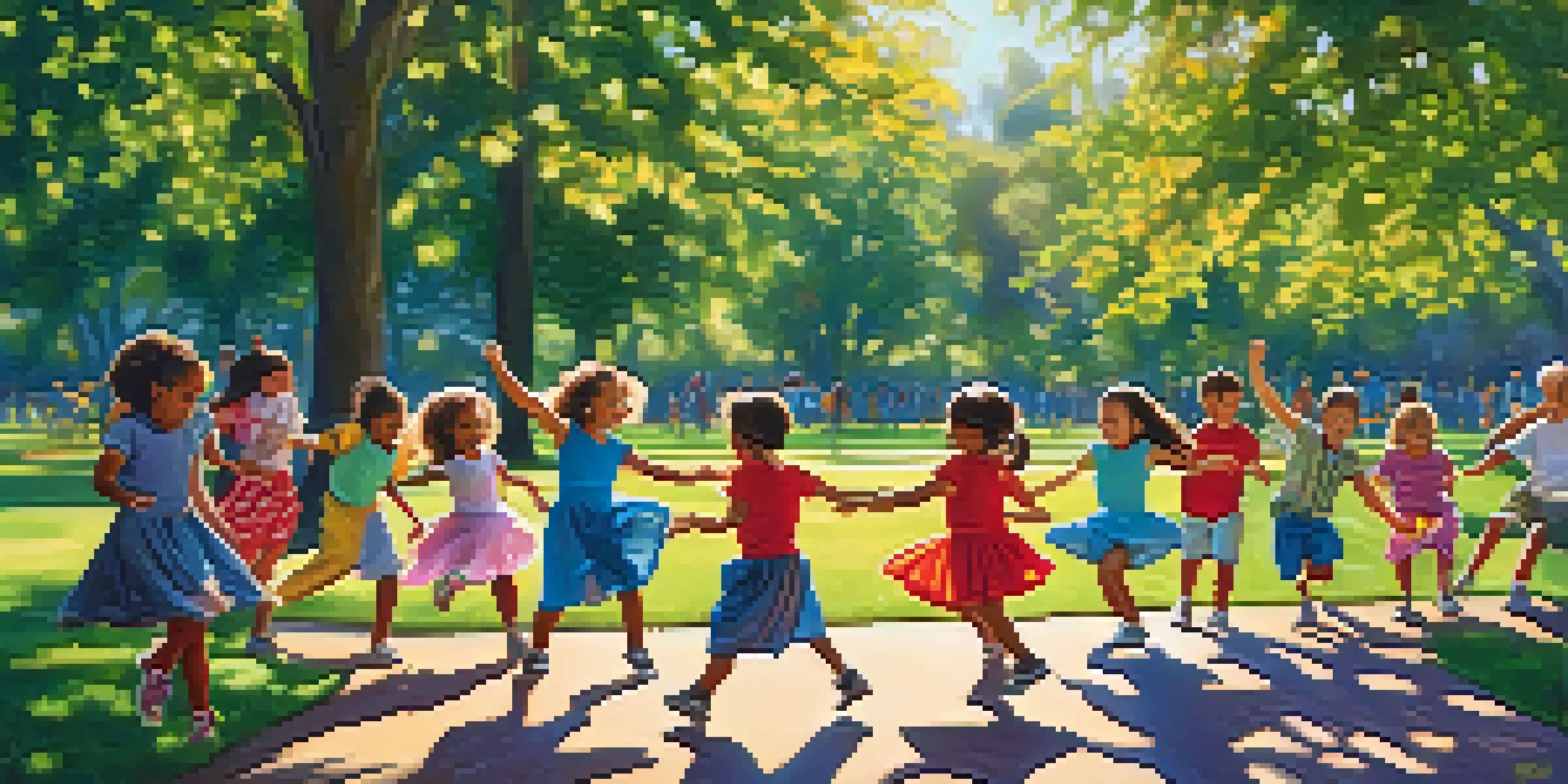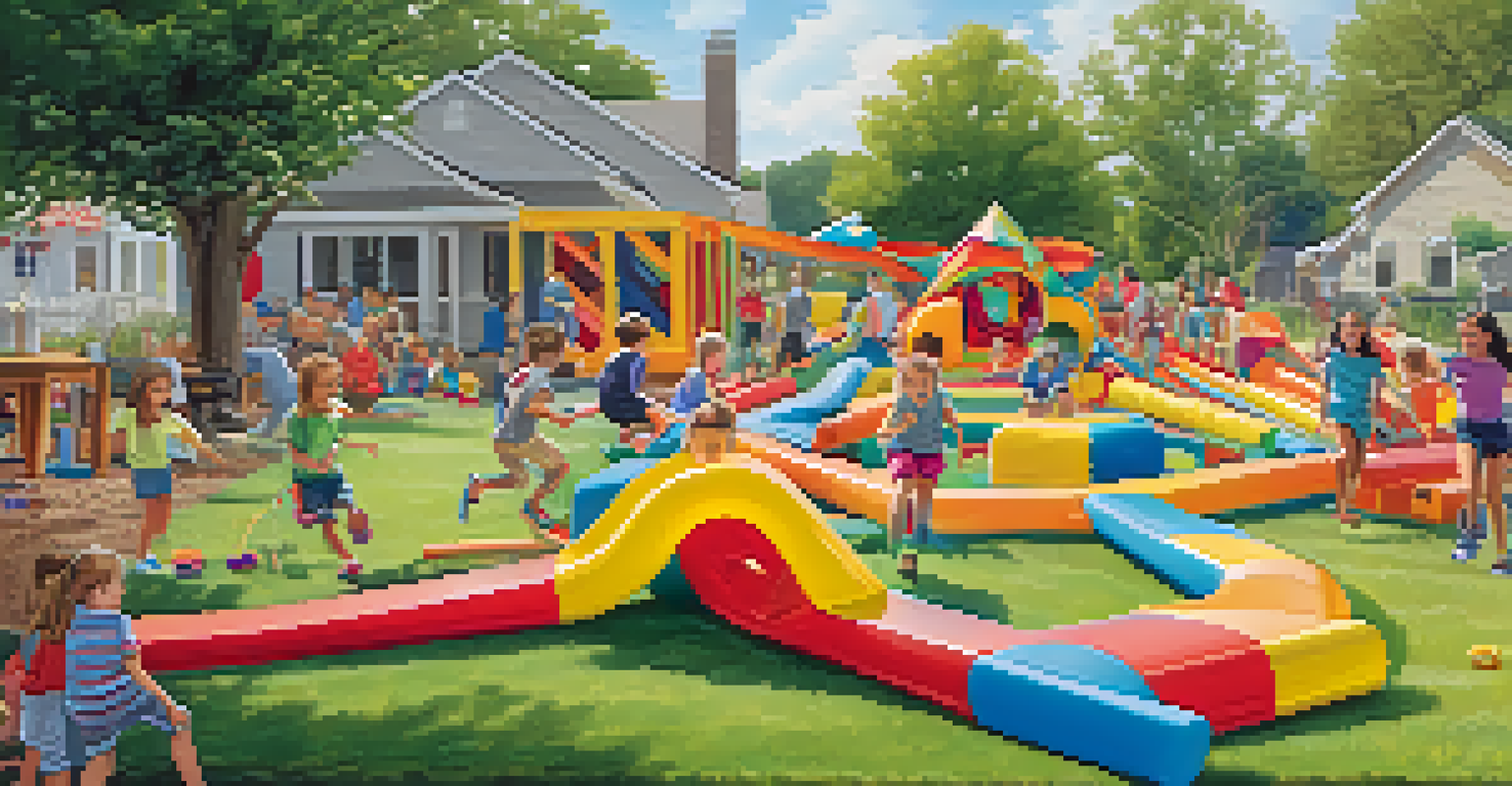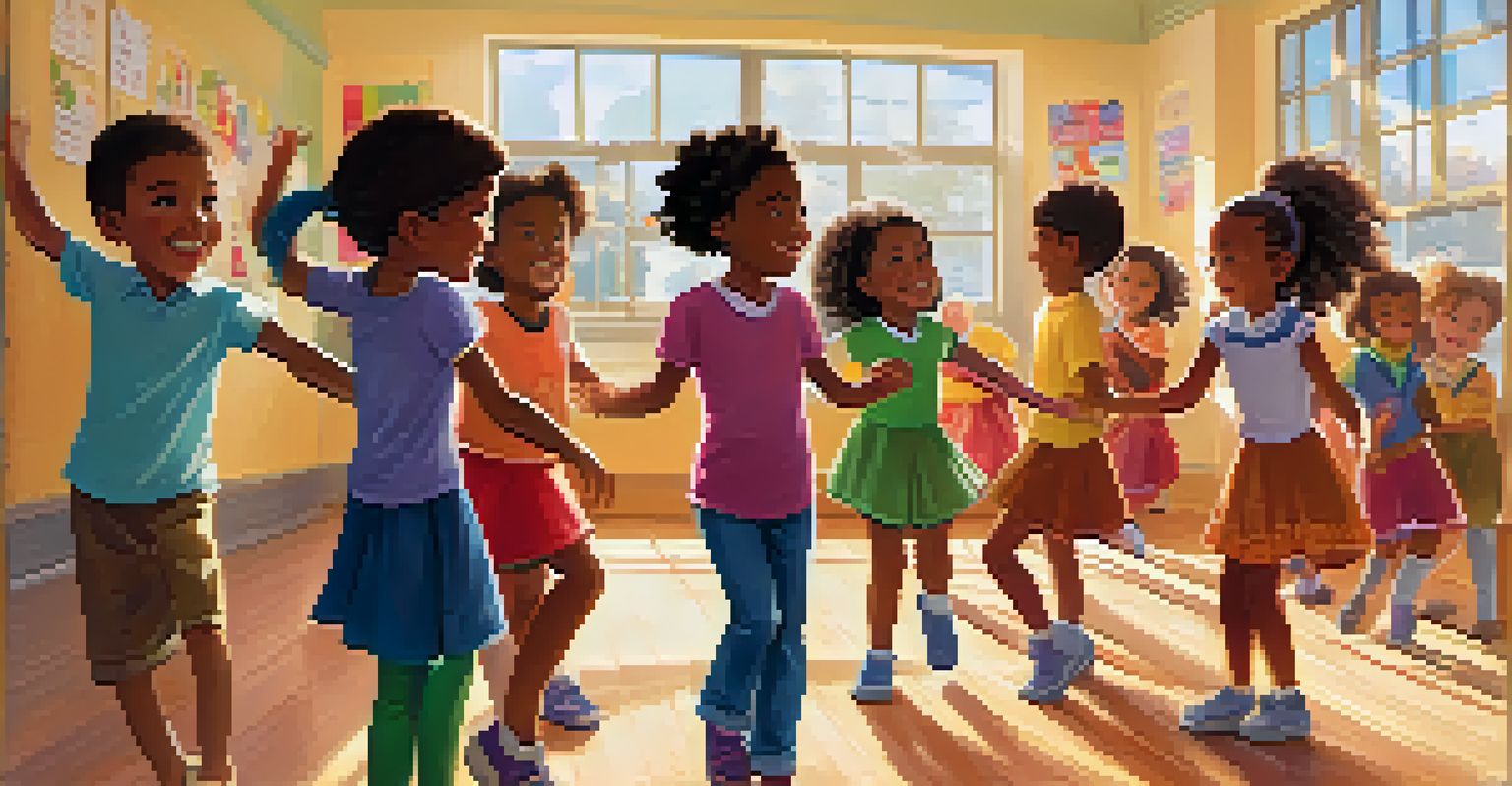Movement Education: Dance, Play, and Child Development

Understanding Movement Education and Its Importance
Movement education is a dynamic approach that emphasizes physical activity through dance and play. This method encourages children to explore their bodies, developing motor skills while having fun. It highlights the importance of movement as a fundamental aspect of learning and growth.
Movement is a medicine for creating change in a person's physical, emotional, and mental states.
Incorporating various forms of movement can stimulate a child's cognitive, social, and emotional development. For instance, when children dance, they not only improve their coordination but also express their feelings and creativity. This holistic development is crucial in the early years, setting a strong foundation for lifelong learning.
Moreover, movement education fosters a sense of community and collaboration among children. Engaging in group activities, such as dance or games, promotes teamwork and communication skills, which are essential for their social interactions. Thus, movement education plays a pivotal role in shaping well-rounded individuals.
The Role of Dance in Child Development
Dance is more than just an art form; it is a powerful tool for child development. Through dance, kids can improve their balance, coordination, and rhythm, which are vital components of physical literacy. For instance, learning different dance styles exposes children to various movements that enhance their physical capabilities.

Additionally, dance encourages self-expression and boosts confidence. When children perform, they gain a sense of accomplishment and learn to appreciate their own abilities. This self-esteem is crucial for their overall development, as it influences how they approach challenges both in and out of the classroom.
Movement Enhances Child Development
Movement education promotes cognitive, social, and emotional growth in children through activities like dance and play.
Furthermore, dance can improve cognitive functions, such as memory and concentration. Learning choreography requires children to remember sequences and patterns, strengthening their brain's neural connections. This mental engagement makes dance an effective and enjoyable way to support academic success.
Playtime as a Foundation for Learning
Play is often seen as a pastime, but it is a fundamental aspect of childhood learning. Through play, children explore the world around them, developing essential skills like problem-solving and critical thinking. For example, building with blocks involves planning, spatial awareness, and creativity.
Play is the highest form of research.
Moreover, imaginative play allows children to experiment with social roles and understand emotions. When kids engage in role-playing games, they learn empathy and cooperation, which are vital for their emotional intelligence. This kind of play fosters a deeper understanding of themselves and their relationships with others.
The benefits of play extend to physical development as well. Running, jumping, and climbing are all part of active play, enhancing gross motor skills. Therefore, encouraging play in various forms is essential for a child's overall growth and well-being.
Integrating Movement into Daily Routines
To maximize the benefits of movement education, it's essential to integrate physical activity into daily routines. Simple changes, like incorporating short dance breaks or active games during playtime, can significantly enhance a child's movement experience. These moments not only keep children physically active but also break up sedentary periods.
Parents and educators can also create a movement-rich environment by providing opportunities for exploration. Setting up obstacle courses or organizing dance parties encourages children to be active while having fun. These activities promote a love for movement, making it a natural part of their lives.
Dance Boosts Confidence and Skills
Engaging in dance helps children improve physical abilities while fostering self-expression and boosting their self-esteem.
Furthermore, consistency is key. Regularly scheduled movement activities can help establish a routine that prioritizes physical health. When children see movement as an enjoyable and integral part of their day, they are more likely to develop healthy habits that last into adulthood.
The Benefits of Group Activities in Movement Education
Group activities play a significant role in movement education, creating opportunities for social interaction and cooperation. When children engage in team sports or dance classes, they learn the value of working together toward a common goal. This sense of community enhances their social skills and builds lasting friendships.
Participating in group activities also teaches children about healthy competition and sportsmanship. They learn how to deal with winning and losing gracefully, which is an essential life skill. These experiences foster resilience and emotional growth, preparing them for future challenges.
In addition, group activities can boost motivation. Children tend to be more engaged and enthusiastic when they are part of a team. This collective motivation not only enhances their enjoyment of physical activity but also encourages them to push their limits and try new things.
The Connection Between Movement and Academic Success
Research shows a strong link between physical activity and academic performance. Children who engage in regular movement tend to exhibit improved concentration and cognitive function, which can lead to better grades. For instance, incorporating movement breaks during lessons can help refresh students' focus and enhance their learning experience.
Moreover, physical activity stimulates the brain, increasing blood flow and oxygen supply. This can enhance memory retention and overall cognitive capabilities. Thus, integrating movement into the academic setting can create a more effective learning environment.
Play is Essential for Learning
Playtime is crucial for developing problem-solving skills and emotional intelligence, laying a foundation for lifelong learning.
Additionally, movement education promotes a positive attitude toward school. When children associate learning with fun and physical activity, they are more likely to develop a love for learning. This engagement can have lasting effects on their educational journey.
Encouraging Lifelong Movement Practices
To nurture a lifelong love for movement, it's essential to instill positive attitudes toward physical activity from an early age. Encouraging children to explore various forms of movement—whether it's dance, sports, or outdoor play—can help them discover what they enjoy most. This exploration fosters a sense of autonomy and self-directed learning.
Furthermore, modeling active behaviors as adults can inspire children to follow suit. When parents and educators prioritize movement in their own lives, children are more likely to see it as a valued part of their daily routine. This leads to the development of healthy habits that can carry into adulthood.

Finally, celebrating achievements in movement, no matter how small, reinforces the importance of physical activity. Recognizing their efforts and progress helps children build confidence and reinforces their commitment to staying active. In this way, movement education becomes a lifelong journey rather than a fleeting phase.